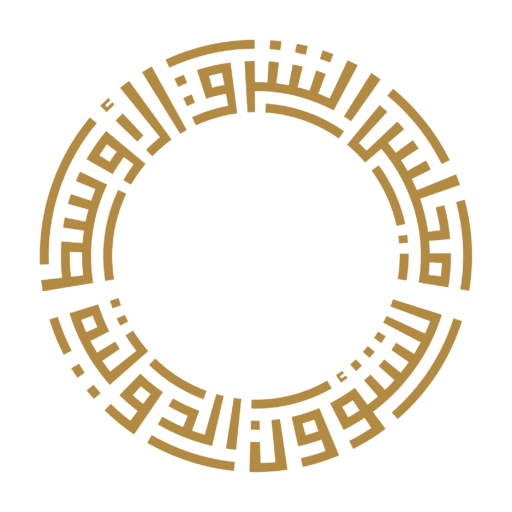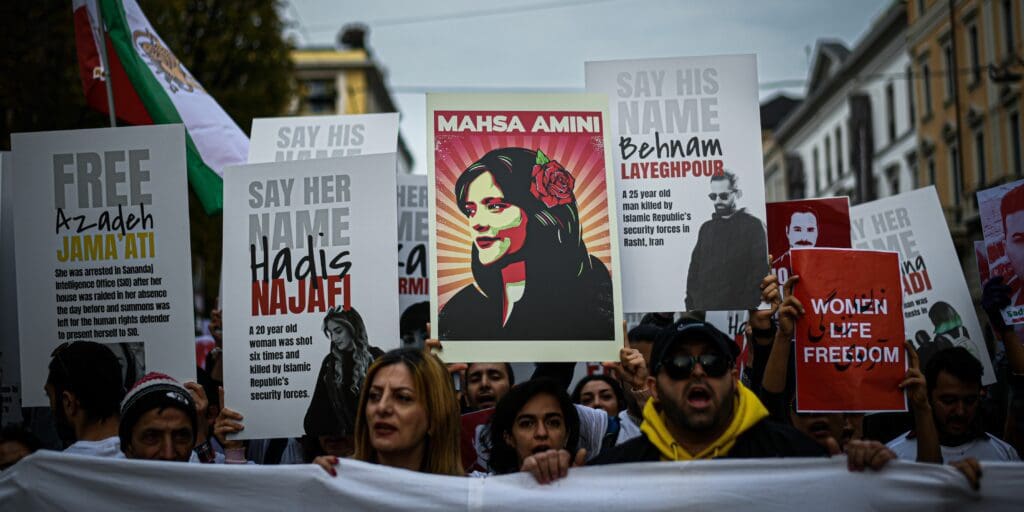The Islamic Republic of Iran is engulfed in crisis as a popular uprising threatens the foundations of the regime. The brutal murder of an Iranian-Kurdish woman, Mahsa Amini, while in police custody for not wearing her headscarf according to government-imposed standards has galvanized Iranians of all backgrounds at a moment when the regime faces several key domestic and external challenges. These include a severe economic crisis, the failure to reach an agreement with the United States on Tehran’s nuclear ambitions, ongoing U.S.-imposed economic sanctions, and challenges to its regional proxy network. Experts from the Middle East Council on Global Affairs weigh in on the protests and what they mean for the wider region.
Iran Protesters Pull from a Deep Well of Grievance
For months, Iran has been gripped by the type of sustained, nationwide protests that can only be driven by a profound dissatisfaction, and resentment toward, the prevailing political order. Iranians from all walks of life are risking their lives to demand genuine change. And they are encountering the type of violent repression characteristic of a regime entering survival mode, including the recent public executions of two protesters for “waging war against God.”
It is little surprise that the catalyst for this tumult was an act of naked injustice. The killing of Mahsa Amini—a Kurdish-Iranian woman improperly wearing her headscarf—has given shape, character, and potent symbolism to the protests. But beneath the act itself was a deep well of grievance that draws from decades of economic, political, and social discontent. Simply put, this regime has not delivered on the needs and aspirations of its people. And the controlled nature of Iranian politics has prevented any genuine redress or recourse. Like all authoritarian governments, this fundamental rigidness is the source of its vulnerability.
That being said, it is difficult to see the Iranian regime itself collapsing—although not impossible. The Islamic Republic is deeply entrenched with crosscutting stakeholders and has spent its entire existence fighting against significant efforts to undermine it. The regime is an adept survivalist that will not cow to external pressure to step aside, as say Hosni Mubarak in Egypt, and is a ruthless repressor of internal opposition, as it has demonstrated several times in the past. Still, the uprising in Iran is a stark warning to many other regimes in the region (and beyond) that although the Arab Spring uprisings may have been quelled, the underlying conditions that gave rise to them remain potent instigators of unrest.
Iranian Protests Have Been a Precursor for the Arab World
For the Arab world, Iran’s ongoing protests are a reminder of the fundamental role of political and socioeconomic grievances in fomenting civil unrest. Twice in the past decade or so, Iranian protests have served as a precursor to mass mobilization in the region—in 2009, before the Arab Spring, and in 2017, prior to what became known as the Arab Spring 2.0. And while the precise triggers for each wave of protests in Iran and in Arab countries have varied, one common driver in both cases has been the build-up of economic pressures from external shocks and governmental mismanagement. Having endured significant economic hardship during the pandemic, ordinary citizens across the Middle East looked forward to the post Covid-19 recovery. Instead, they have been buffeted by massive spikes in commodity prices that have aggravated the growing problem of food insecurity. Worse, global economic dislocation is set to deepen in the coming period with limited space for cash-strapped governments to mitigate the impact.
Iran Protests Rise Above Ethnic Politics
For the first time since the birth of the Islamic Republic in 1979, the regime in Iran faces an existential challenge that could topple the country’s clerical rulers. Sparked by the brutal killing in police detention of a 22-year-old Kurdish woman, Mahsa Amini, the uprising takes place against the backdrop of years, if not decades, of resentment toward the regime. Such rancor has been fueled by the regime’s repressive rule and human rights abuses, its mismanagement of the economy, and its expansionist policies in the wider Middle East.
The Iranian regime is no stranger to protests. Since 2017, there has been at least one major protest a year. Unlike those upheavals, however, the current uprising may yet dismantle the regime in its entirety with far-reaching implications for the entire region. Given Iran’s vast deployment of proxies in the Arab world and its entanglement in nearly every major conflict unfolding in the Middle East and North Africa, the fall of the regime would be felt everywhere.
Conversely, the regime’s survival will almost certainly see it mount a violent crackdown against protest leaders and vulnerable communities, such as women and ethnic or religious minorities. This will most likely include the Kurds, on whom the regime has already blamed the unrest. In keeping with this narrative, and as a pretext for repression at home, the regime has launched missile attacks in the Kurdistan region of Iraq against alleged Kurdish opposition bases. While there is no doubting the Kurdish revolutionary fervor that Mahsa Amini’s death has sparked among Iran’s long-oppressed Kurdish population, her brutal death has come to symbolize something much bigger than the Kurdish cause in Iran that strikes at the very heart of the political and ideological system that underpins the Islamic Republic.
World Must Aid Iran in Accountability
Iranian men and women have a long history of protesting against their government. These efforts have resulted in significant changes and present a real source of resistance to Iranian governmental practices that have adversely affected the social, economic, and political well-being of the Iranian people. But authoritarian practices in the country, and the politicization of its judicial institutions, mean that holding Iranian regime officials accountable for perpetrating injustices is close to impossible.
As a result, additional international avenues that complement the efforts of Iranians are crucial, especially those that seek criminal accountability. The lack of accountability is one reason that oppressive regimes—including Iran’s—feel emboldened to continue to pursue destructive policies at will. Earlier this year, a former Iranian government official, Hamid Nouri, was prosecuted and sentenced to life in prison in a Swedish court for his role in the 1988 massacre of Iranian political dissidents. This was a significant development, as it was the first time that an Iranian official was prosecuted for serious violations of international law. Iran’s current president, Ebrahim Raisi, has come under increasing scrutiny for his role in overseeing those killings in his capacity as a judge sitting on secret tribunals known as “death committees.”
The continuation of such legal efforts to pursue accountability for powerful former and current Iranian officials for their role in injustices would send two important messages: First, it will begin to weaken the capacity of regime officials to enjoy complete impunity for egregious crimes. Secondly, strategic litigation practices led by Iranians and their international partners constitute a tangible form of solidarity in pursuit of justice. While Iranians continue to resist and demand freedom from oppressive rule on the streets of Iran, such accountability efforts are a small but significant way that their international allies can support their cause.
Protests Drive a Further Wedge Between Nuclear Negotiators
The ongoing protests in Iran have become an important factor in Tehran’s relations and policy goals abroad, especially the negotiations to revive its nuclear agreement with the P5+1. While these negotiations were always fraught with difficulties as a result of domestic politics in stakeholder countries, the protests have caused more acrimonious exchanges between Tehran and Western capitals. As such, it becomes more difficult for members of the P5+1 to engage with Tehran in an effort that would ultimately reward the regime by lifting sanctions. Additionally, Western criticism of the regime’s crackdown on protesters has probably deepened the paranoia of Iran’s conservative ruling elite and driven a broader wedge between the two sides of the nuclear deal.
Moreover, several Gulf Arab states and Israel are likely pleased to see that anti-regime protests are rocking Iran and the regime’s crisis of legitimacy is deepening. However, what they like is the prospect of the regime’s weakening, not the empowerment of the Iranian people. With memories of the Arab Spring uprisings still fresh, many regional governments recoil from the idea of restless publics overthrowing incumbent regimes. And with Tehran needing to deflect attention away from its domestic woes, the government will probably become even more aggressive and assertive in its regional policy.

